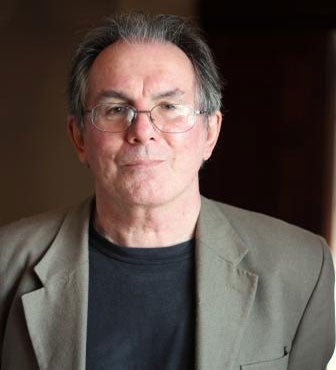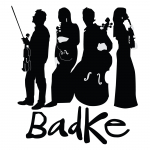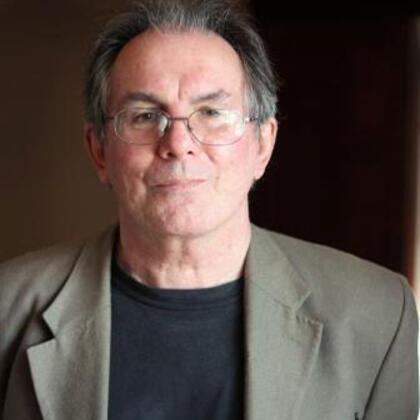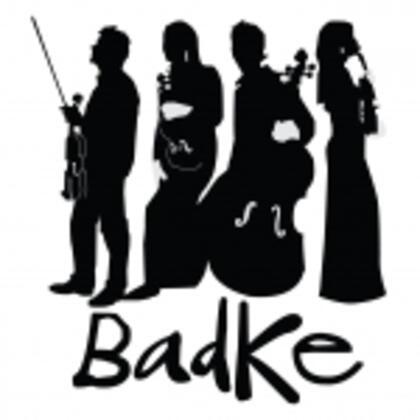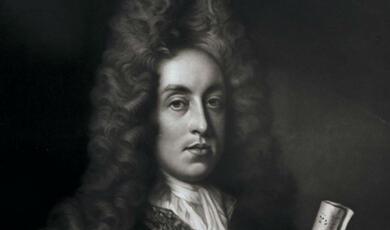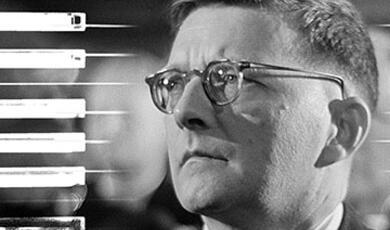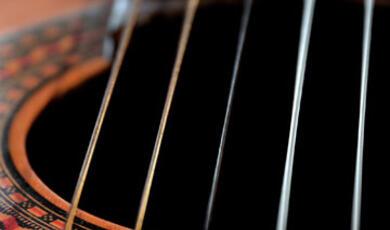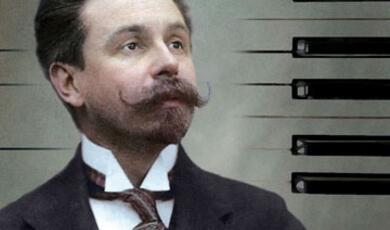Mendelssohn - Quartet in A minor, Op 13
Share
- Details
- Transcript
- Audio
- Downloads
- Extra Reading
One of six lectures devoted to a major work in the string repertory. Each will end with a complete live performance of the work by the Badke Quartet. The lectures will discuss both the historical and musical background of the work in question, and examine any particular performance problems that it raises. The Badke Quartet, formed in 2002, is widely recognised as one of Britain's finest young string quartets. Recipients of the Leverhulme Junior Chamber Music Fellowship at the Royal College of Music from 2003-2005, and the Bulldog Scholarship for String Quartet at Trinity College of Music in 2006, the Badke Quartet has received widespread acclaim for its energetic and vibrant performances.
Download Transcript
MENDELSSOHN QUARTET IN A MINOR OP 13
Professor Roger Parker
This series of six lecture-recitals has taken a somewhat circuitous route around the string quartet repertory. Its outer limits have spanned around 150 years, from Haydn's Opus 20 set, written in the 1770s, to Bartok's Second Quartet, which appeared in the first decade of the twentieth century. A huge journey, then: from Enlightenment poise and clarity, through the Romantic period and its aftermath, and into modernist angst and doubt; or, if you prefer something more musical-technical, from clear forms and tonal stability, to increasing freedom and chromaticism, and eventually to fragmentation and the edge of atonality. As I've mentioned more than once, one of the most surprising aspects of this extraordinary musical journey is that it can be charted so thoroughly through the medium of the string quartet: through music written for a collection of instruments that was certainly conventional and unexceptionable in the late eighteenth century, but which then survived as a genre despite unimaginable technological and aesthetic change elsewhere on the musical scene. If you compare Haydn's early symphonies with his early string quartets, there is in some cases hardly any difference: take away or add a few wind instruments and one turns into another. But the difference between the sonic possibilities of an orchestral work by Bartók or Debussy and their string quartets is vast. Why didn't this chamber-music group evolve in the same way as the orchestra did?
The obvious answer (and again I've mentioned it more than once in past lectures) is that, after the quartets of Haydn, Mozart and, particularly, Beethoven, this particular combination of instruments became "canonic". Any composer of pretension growing up within the Austro-German tradition felt its pull, in particular the need to measure himself against past glories. And as, during the nineteenth century, Austro-German instrumental music increasingly became the benchmark against which other national traditions felt they must be compared, so the string quartet spread to other countries. What we might call this "emulative pull" did not, as the nineteenth century rolled on, always produce positive results, sometimes causing composers to go against their musical personalities in an attempt to contribute to the Great Tradition. Johannes Brahms's austerely integrated string quartets might for some be a good case in point. There may be people here who revere these quartets'you'll recognize them by their frown of concentration and carefully tented fingers while listening, and by the hint of hair shirt often visible beneath their grey suits. But most of us will prefer Brahmsian works in which the weight of tradition hangs less obtrusively. The same goes in spades for Schoenberg's über-austere string quartets, which have indeed become classics of music history, but which seem to be much more fun to write about and read about than to listen to. Indeed, it's probably no accident that most of the best-loved and often-played late nineteenth-century and twentieth-century quartets come from outside the Austro-German centre: from places such as Debussy's France or Bartók's Hungary in which the whole idea of the Great Tradition was less disabling.
However, the period immediately following Beethoven had few of these fixations, or, rather, acquired them only gradually as the idea of what one author has called, tellingly, "Beethoven Hero" emerged. The generation who came to maturity in the 1820s and 1830s often managed to produce works that, although not entirely free from the Beethovenian shadow, could nevertheless find relatively unselfconscious ways of expressing themselves through string quartet writing. The most obvious and prolific of these composers is obviously Schubert, although it is perhaps significant that his most popular chamber musical works are mostly in other forms: in the string quintet, which was untouched by Beethoven, and (from the time of Mozart) was more open to influences from other genres such as opera and the symphony; or in chamber music with piano, in which the lighter, virtuosic vein that had invaded musical taste after Beethoven could be more freely expressed.
At first glance, it might seem that today's composer, Felix Mendelssohn, who was born in 1809 and died tragically young in 1847, was to follow a similar path to Schubert. Mendelssohn was a child prodigy, both as a virtuoso pianist and organist, and as a composer. Part of his extraordinary compositional fluency as a teenager may have come from the rather old-fashioned training that he received in his early years: he was schooled in the then-antique skills of counterpoint and figured bass, and so learned how to manipulate notes in an abstract sense, without the need necessarily to "express himself"; and in the realm of free composition he seems to have been encouraged to imitate the language and forms of Mozart and Haydn rather than more "modern" composers. However, in 1821 (at the ripe old age of 12) Mendelssohn encountered the music of Weber, whose spirit can be seen in both of his most famous early works, the Octet Op. 20, written in 1825 when he was sixteen, and the Overture to A Midsummer Night's Dream, which appeared a year later.
The year after that, 1827, saw a change, and it is marked by the appearance of the work that will concern us today, the String Quartet in A minor, Op. 13. Mendelssohn was eighteen and about to embark on a hectic professional career that would take him to many European centres: mostly notably, of course, to London, where his skills in those "ancient" compositional techniques would eventually find him a comfortable niche as an oratorio composer to rival Handel and Haydn. But before all that, and precisely by means of this A minor string quartet, he decided that he had better deal with Beethoven, who had died in March of that very year. And he did so in the age-old manner of conscious emulation: through an overt attempt to model his new string quartet on the music of the great master. What is most surprising, though, is that Mendelssohn did not take the (for him) comparatively easy route of choosing to emulate Beethoven's earlier, Haydn- and Mozart-influenced string quartets (the Op. 18 set); nor did he follow the style of the times and choose as models the "heroic" Beethoven of the Op. 59 "Razumovsky" quartets. Instead, he emulated Beethoven's most recent and most idiosyncratic quartet style, the kind found in his late quartets. Quite why he took this radical route remains something of a mystery. As has been frequently pointed out, Beethoven's last style was by no means widely understood during these years; many thought it a tragic decline from the "heroic" period that produced Op. 59. But somehow Mendelssohn seems to have grasped that the strangely interior musical mode that suffuses Beethoven's late quartets, with its fragmentation of conventional form and its frequent allusions to alien genres such as fugue and solo song, would allow him to experiment most easily: to try on, as it were, the musical clothes of his most august predecessor.
***
The first thing to notice about the quartet is that it is overtly programmatic. In the slow introduction to the first movement there is an obvious quotation from a song called "Frage" (Question) that Mendelssohn had written earlier in 1827. In one sense this might remind us of Schubertian examples (the "Trout" Quintet and the "Death and the Maiden" Quartet are the most well-known) in which pre-existing songs are incorporated into chamber works. But Schubert's use of such material is very different: his song melodies are exported whole into an instrumental movement. Nearer to the spirit of this Mendelssohnian case is the example of Beethoven's last quartet, Op. 135, whose final movement famously opens with a musical motto under which Beethoven wrote the question ("Muß es sein"-"Must it be"). Nearly the same thing happens at the very start of Mendelssohn's Op. 13, in which the motive that articulates the recurring question of the song "Frage", "Ist es wahr?" (Is it true?), is prominently employed. But, as with the Beethoven example, note the ambiguity: what, precisely, is the "it" referring to? In both cases, the importation of the "texted" motive brings with it a sense of semantic uncertainty rather than an obvious poetic image.
The full text of "Frage" may be useful in contemplating some aspects of the Quartet:
Is it true? Is it true? That you are still there in the arbour, by the grape vines, waiting for me? And cry to the moonlight and the starlight for news of me? Is it true? Speak! What I feel none can know but she who feels thus and who, true to me forever, true to me forever, forever will remain.
With those words in mind, let's listen immediately to the opening Adagio, which carries the "Is it true?" motto. As you'll hear, the musical atmosphere is obviously reminiscent of late Beethoven at his most lyrically enigmatic. It is made up of fragments of intense, hymn-like harmony, but with the range of the string quartet gradually expanding as the first violin rises ever higher; and finally the music comes to rest on the "question motive" [sing it] which is quietly repeated. Then follows a simple cadence, an ominous trill low in the viola, and the start of the first movement proper, an Allegro vivace. The excerpt here is played by the Quatuor Mosaïques, on original instruments, and I'll run it into the opening of the Allegro to give you a hint of what is to come.
PLAY CD 1/TRACK ONE: FROM START TO 1:30, THEN FADE
It would, I think, be dangerous to try to read a detailed "programme" into this use of music that had previously been attached to words. Clearly the motive that we heard at the end of the introduction does indeed pose a question. But that may be as far as it goes. Those looking earnestly for arbours and grapevines may be disappointed, although the use of the song obviously encourages such speculation. Mendelssohn's father, no less, asked his son to clarify what thoughts lay behind the music (whether music was or was not "programmatic" was becoming an anxious aesthetic question around this time); the son replied that "he probably had no thoughts at all". Or rather, one might guess, he mainly had musical thoughts, albeit ones initially stimulated by a poetic idea.
This sense of abstraction is certainly there in the Allegro, which is conventionally classical in form and, as you heard already, is dominated at the outset by two ideas. The first is those rapid semiquavers that originated from the viola's ominous trill; the second is a more melodic idea, which is usually presented contrapuntally, and has an obvious connection to the "question" motive by way of its prominent dotted rhythm. Let's take up the movement where we left off, and continue until we reach a third prominent idea (what we in the trade call the 'second subject' of the movement): an insistent, passionate theme announced by the cello and then taken up by the first violin:
PLAY CD 1/TRACK ONE: FROM 1:30 to 3:20, THEN FADE
As you can hear, this is a movement not without its technical difficulties, particularly in the influence of that "school of virtuosity" that was so important in Mendelssohn's day. But-and this is important-the virtuosity is always controlled and carefully patterned; while the textures sometime refer to Beethoven, there is little sense of Beethovenian struggle; to put this another way, the music behaves itself formally.
The slow movement, which is simple enough not to need musical illustration, explicitly models itself on late Beethoven: its openingcantabile, with the return of that "hymn-like" harmony and simple, singing melody we heard in the introduction, is in unmistakable homage to movements such as the Cavatina of Beethoven's quartet Op. 130. And what follows this opening "hymn" is also reminiscent of the great man's last works, in that an instrumental fugue solemnly unfolds, eventually culminating in an impressive, Baroque-sounding, organ pedal point for the cello. But then, to usher in the inevitable return of the "hymn", the first violin indulges in a wordless recitative: again Beethovenian, and again suggesting that there are words lurking on the border of this instrumental inspiration. (It's no accident that some of Mendelssohn's most famous later piano works are called Songs Without Words.)
The third movement, called "Intermezzo", is in the same simple ternary form as the second, but is very different in character. In place of the second movement's solemn hymn, we have a clear imitation of folk music, with a simple melody in the first violin and pizzicato (guitar-like?) accompaniment in the lower strings. It is only when the folk-theme becomes contrapuntally developed that we realize it closely resembles the winding shape of the second movement's fugue subject. The "B" section of this ternary form, an "Allegro di molto", is as contrasting as can be imagined: it is one of those manically fast staccato inspirations that Mendelssohn had already experimented with to depict the fairies in theMidsummer Night's Dream overture, and that would become a feature of his mature style. Here's the start of the movement, running on into the opening of the staccato episode:
PLAY CD 1/TRACK THREE: START TO, THEN FADE AT 2'15"
And then, at the end, the folk-tune returns to close off the movement, albeit with repeated backward glimpses at the frenetic bustle of the middle section.
The extreme contrasts of this third movement prompt me to suggest that one way of looking at the work so far is as a procession of experiments into the limits of the string quartet. How far can the medium embrace other musical modes? Can it intone a solemn hymn, sketch operatic recitative, or imitate Bach's organ, or a simple folk instrument, or an orchestral scherzo? Can it, as the slow introduction to the first movement suggests, reach the borders of song? Nowhere is this hybrid, experimental character more evident than at the start of the last movement, which begins with yet another gesture to recitative, although this time far more anguished, underpinned by tremolando lower strings, and with the solo first violin seemingly divided between its role as the recitative "voice" and its role as an instrumental virtuoso. This soon leads into the final movement proper, which is again alternates various themes: the first dominated by dotted rhythms; then a driving idea characterized by furious anapest rhythms [demonstrate]; and then yet another variant of the second movement's fugue subject, again developed in a fugal texture. The impassioned recitative intrudes more than once, but finally gives way to a remarkable coda, which overtly recalls the slow movement's fugue and then leads, by means of more violin recitative, to a reprise of the opening of the entire quartet, complete with its "Is it true?" song quotation. The "Frage" motive is now subtly reharmonized, not so much to make it a fitting close to the entire work, but to end with a question, a musical question. The impression of this strange close is certainly gentle, but it is remarkable unemphatic: Should we return to the start? Is the quartet really an endless loop? What, in the end, is the question asked of us?
***
Given the wild experimentation of Mendelssohn's Op. 13, the obvious gestures towards Beethoven and generally unorthodox exterior, it is small surprise that the quartet's reception has been remarkably mixed. The composer himself, with typical self-deprecation, recalled one episode during the work's Parisian premiere in 1832, which he attended. During the last movement, the person sitting next to him tugged on his coat and said: "It's like that in one of his symphonies". Mendelssohn was confused and asked for clarification. His companion explained: "Beethoven, the composer of this quartet". It was, as Mendelssohn said, a bitter-sweet compliment. A little later in the century, with the composer a secure feature of the Victorian establishment, the quartet's evident shows of learning and its surface complexity and air of experimentation were often found disturbing, especially in contrast to the less rebellious works of his maturity. And then there were long periods in which the composer's racial origins made his absorption into the German pantheon impossible: such attitudes were in place as early as 1850, when Richard Wagner launched a notorious attack, and of course they only intensified during the first half of the twentieth century.
Those attitudes are mostly behind us, even though the rhetoric with which Mendelssohn is sometimes too easily dismissed can still have ghostly echoes of times past. In general, though, we are now ready to appreciate him anew; and surely one of the best places to start such a process is with this A minor string quartet, in which Mendelssohn's remarkable fluency as a composer comes into vibrant contact with his love of music of the past, and with the preoccupations of his own period, in which music seemed at its most characteristic when it hovered on the edge of meaning, at the borders of the poetic, where questioning words flow into sounding gestures.
***
Those final words of mine, about questioning words flowing into sounding gestures, might also be apt as a way of closing the last of these six lectures in which I have collaborated with the Badke Quartet. The words stop and the music begins. In spite of initial intentions to the contrary, the Quartet and I decided to keep the two mediums separate. Listening to lectures is, after all, very different from listening to music, just as writing words about music is a very different activity from playing music. (I could here take up a violin or cello and illustrate that statement with painful clarity; but I'll spare you any such melancholy demonstration of my inadequacies as a performer.) However, I remain convinced that experimenting with the near proximity of live music and live words that discuss that music's history and attempt to describe its effect is a worthy pursuit; and doing so six times during the past months, in this hall, been one of the great pleasures of my professional life. And so, alas for the final time, let me introduce the Badke Quartet. Please join me in welcoming them: Heather Badke (first violin), Emma Parker (second violin), Matthew Jones (viola) and Jonathan Byers (cello).
Badke Quartet plays Mendelssohn, Quartet in A minor, Op. 13
©Professor Roger Parker, Gresham College, 26 June 2008
Part of:
This event was on Thu, 26 Jun 2008
Support Gresham
Gresham College has offered an outstanding education to the public free of charge for over 400 years. Today, Gresham plays an important role in fostering a love of learning and a greater understanding of ourselves and the world around us. Your donation will help to widen our reach and to broaden our audience, allowing more people to benefit from a high-quality education from some of the brightest minds.


 Login
Login
